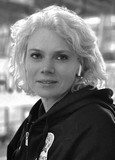INFLUENCE OF MAXIMUM STROKE FORCE AND REDUCTION IN TRAINING VOLUMES ON ATHLETIC PERFORMANCE IN SWIMMING
Keywords:
stroke force, biokinetic force, tapering period, stroke power, swimming, sports result.Abstract
Objective of the study was to reveal the influence of stroke force and narrowing of training volumes on sports results.
Methods and structure of the study. In the course of the experiment, changes in the magnitude of muscle strength during the period of contraction were determined in 17 male swimmers of the highest qualification. Studies were conducted before, during and after the 14-day constriction. Two types of tests were used: on land and in water. On land, using the “biokinetic bench for swimming” simulator, the maximum stroke power was measured. The maximum hand strength was measured at various hand speeds. The simulator allows you to accurately simulate the stroke movements of the hands when swimming freestyle or butterfly, exercises are performed at a given speed. The stroke power value was determined by dividing the total amount of load by the time of one stroke.
Results and conclusions. The results of tests on the biokinetic bench and swimming power measurements showed that swimmers can achieve higher peak power with proper training planning. Recent research data has shown a close relationship between biokinetic strength and sprint speed (freestyle swimming speed). The improvement in the results of swimmers' performances after the period of narrowing was also confirmed by the improvement in performance when performing exercises on the simulator. This means that the strength of the stroke affects the performance.
References
Grigan S.A., Pasechnik Zh.V., Belykh G.N. Planirovaniye trenirovochnogo protsessa plovtsov s ispolzovaniyem vysokoskorostnoy trenirovki [Planning the training process of swimmers using high-speed training]. Teoriya i praktika fizicheskoy kultury. No. 4. 2022. p.71.
Ryzhkin N.V., Stepicheva N.V., Eliseev V.M., Ivanova A.A., Savchenko Yu.A. Vliyaniye silovoy podgotovki na sportivnyy rezultat sportsmenov v akademicheskoy greble [Influence of strength training on sports performance of athletes in rowing]. Uchenye zapiski universiteta im. P.F. Lesgafta. 2020. No. 5 (183). pp. 373-377.
Issurin V.B., (2013) Verbitsk O. Concurrent activation potentiation enhances performance of swimming race start. Acta Kinesiol Univ Tartu, 19, pp. 41-47

Downloads
Published
Versions
- 28-04-2023 (2)
- 18-04-2023 (1)

